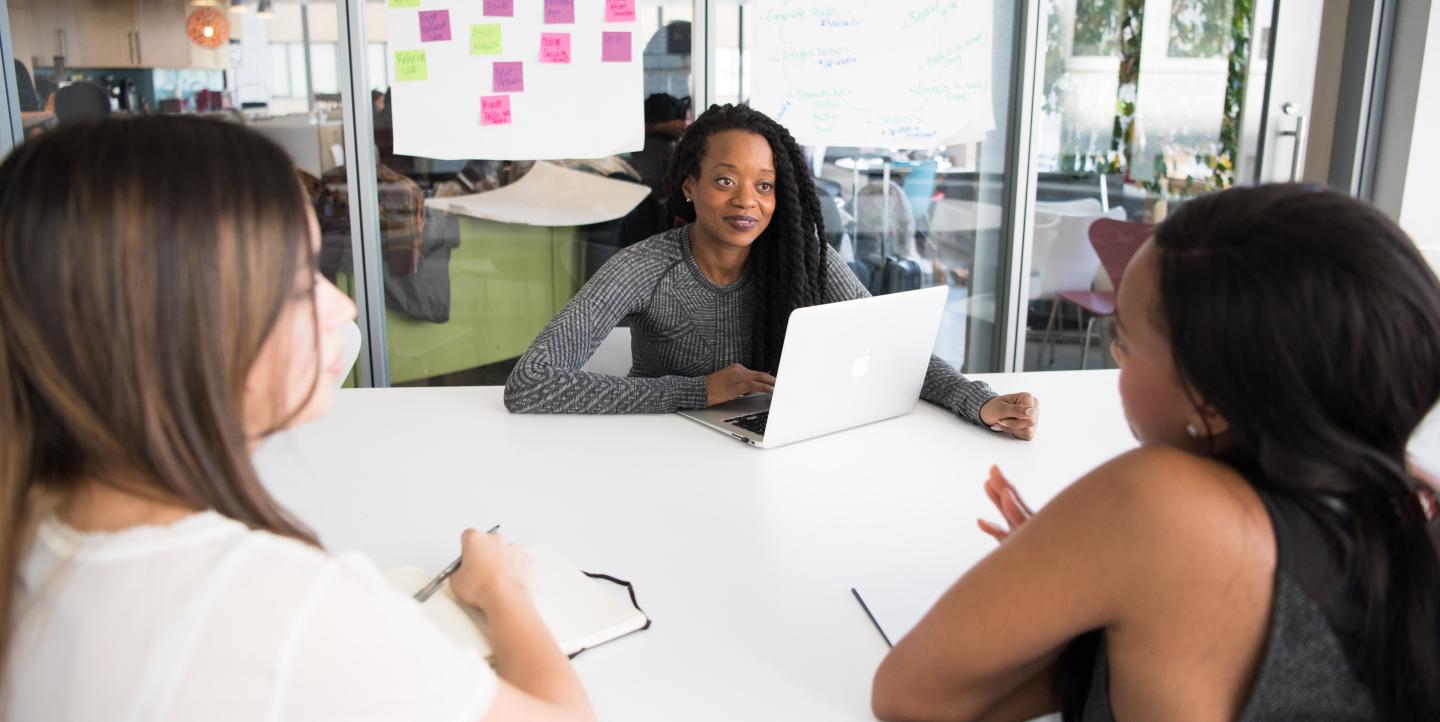News globally is still largely dominated by men.
Luba Kassova, a writer, researcher and audience strategist, details this imbalance in a recent solutions-oriented report titled From Outrage to Opportunity: How to Include the Missing Perspectives of Women of All Colors in News Leadership and Coverage, commissioned by The Bill & Melinda Gates Foundation. The report focuses on India, Kenya, Nigeria, South Africa, the U.K. and the U.S.
Kassova joined Tessy Igomu, head of the investigative desk at Punch Newspapers in Nigeria, in a recent ICFJ Global Crisis Reporting Forum webinar to discuss how journalists can produce more gender-equitable reporting.
“Women are being underrepresented in news leadership, as protagonists in news gathering and news coverage, and fewer women tend to consume news,” said Kassova. “There are [many] areas we need to get right if equitable journalism is to be produced.”
Here are more takeaways:
Women in news coverage
"From Outrage to Opportunity" examines the representation of women in coverage as contributors, the relevancy of news stories to women, and how women are portrayed in the news. It does so by identifying seven structural issues that affect women disproportionately compared to men: pay, health, power, confidence, safety, authority and ageism.
The report’s findings show that the coverage of gender equality issues has declined since the start of the COVID-19 pandemic, with no major news organization systematically measuring how their reporting portrays women. Women’s share of media coverage continues to fall behind men in all six countries examined.
“We should not always look at ourselves as what men refer to us as,” said Igomu.
Meanwhile, news coverage of the aforementioned structural issues facing women journalists is effectively absent. Just one in 5,000 stories contains terms related to these seven gender gaps, while one in 200 stories contain gender-related terms at all.
“We cannot just measure gender equality through representation. We also have to look at how women are portrayed, if there is to be equitable coverage,” Kassova said. “There’s really a long way to go before women’s perspectives are heard in the news, [and] there is very little coverage about the structural issues that women face.”
She added: “What underpins this gap are social norms and unless they are challenged, the gap will remain intact [and] not covered by journalists."
Women in news leadership
Women in news leadership positions is one major area in which representation is failing. Kassova's report shows that women are underrepresented in the most senior editorial leadership roles, and especially in high profile beats such as health, economics and business, foreign affairs and politics.
“This culture of what constitutes a story is very male dominated,” Kassova said. “This is why it’s important to see who is editing the news.”
Women in senior editorial roles face key barriers that weaken their voices. The relative lack of women in similar roles, as well as persistent social norms that often determine what genders cover what topics, are among the major hurdles women news leaders face.
Women of color in South Africa, the U.S. and U.K., are significantly more marginalized than other women due to structural racism and a lack of support for their career growth, according to the report.
The majority of editors interviewed also expressed the opinion that closing the pay gap for women should be prioritized in news coverage over other structural gaps. This includes, for instance, deprioritizing the issue of closing the safety gap, despite the reality that women journalists face more security concerns than their male counterparts while on the job.
The road to more gender-equitable reporting
Making coverage more equitable can come through a variety of policies. Introducing inclusive storytelling, launching a race or gender desk, increasing coverage of the seven aforementioned gender structural gaps, measuring portrayal of women in a given outlet, and targeting women audiences are all concrete steps that can have an impact.
“This is a great opportunity for news providers to produce more equitable coverage and attract more female audiences to reduce the consumption gap between men and women and grow their revenue.” Kassova said. “Just by hiring women the problem won’t be solved, there needs to be intervention at each part of the news value chain.”
Despite these challenges, Igomu stressed that women must remain determined to be a part in changing perspectives in the news.
Until these challenges are overcomed, she said, "the possibility of us actually occupying those top positions we have been advocating for is slim."
Photo by Christina @ wocintechchat.com on Unsplash.
This article was updated on Jan. 25, 2023.


